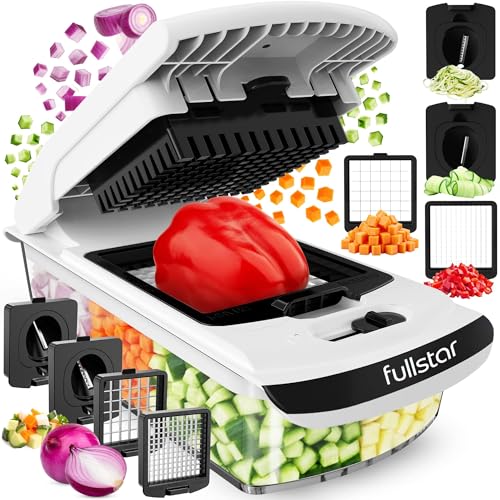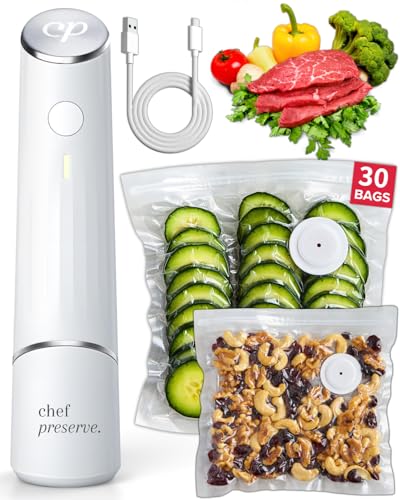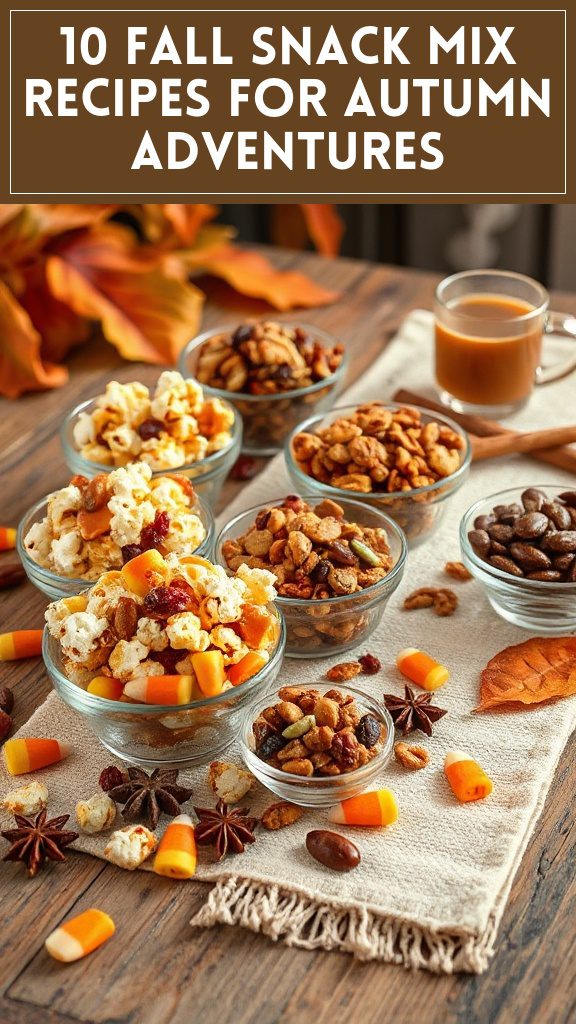Origin in Mesoamerican Cultures
Although the quesadilla is often associated with modern Mexican cuisine, its roots delve deep into the culinary traditions of Mesoamerican cultures.
This ancient culinary creation originated among the Aztecs and other indigenous groups, who utilized maize as a staple ingredient. The basic form—a folded tortilla filled with varying ingredients—was born from the necessity of combining flavors and textures, reflecting the Mesoamerican heritage of resourcefulness.
Initially, quesadillas featured just cheese, but over time, they evolved to include a variety of fillings, showcasing the region’s rich agricultural bounty.
As culinary practices spread throughout Mexico, the quesadilla transformed into a beloved staple, celebrating its ancient origins while adapting to contemporary tastes, thus linking past and present through its delicious simplicity.
- The Original Pro Chopper - Our superstar veggie slicer has been creating waves on TikTok! Simple to use,...
- Easy Meal Prep with Rust-Resistant Blades - Our vegetable chopper is perfect for anyone who wants to eat...
- 5-Star Design - The soft-grip TPU handle ensures controlled chopping, while the non-skid rubber base...
Home Cooks and Food Enthusiasts
The enduring appeal of quesadillas has captivated home cooks and food enthusiasts alike, inspiring countless interpretations across kitchens worldwide.
These versatile creations allow for various cooking techniques, from traditional griddling to modern baking methods, each imparting unique textures and flavors.
Enthusiasts experiment with diverse flavor profiles, creatively combining ingredients like cheeses, vegetables, and proteins to craft personalized versions of this classic dish.
The simplicity of the quesadilla encourages exploration, empowering cooks to infuse local influences and seasonal produce into their recipes.
As a result, quesadillas serve not only as a canvas for culinary creativity but also as a celebration of culture, bringing friends and family together to savor a delightful, shared experience.
- Makes Everything Simple : Just forget your bagged cheese! Only turn the handle for several times and get...
- Premium Material : All parts of the rotary cheese grater are made of food grade ABS material, no BPA. The...
- Three Option Grater : The parmesan cheese grater finishes food preparation with slicing, shredding and...
Essential Ingredients

A selection of essential ingredients forms the backbone of authentic quesadilla recipes, influencing flavor and texture.
Tortillas, whether made from corn or flour, serve as the fundamental base, providing a canvas for delightful fillings. Cheese, the heart of the quesadilla, commonly includes varieties like Oaxaca or Chihuahua, known for their meltability.
Additionally, traditional ingredient pairing with proteins such as shredded chicken, chorizo, or sautéed mushrooms elevates the dish further. Fresh herbs like cilantro and spices, including cumin and chili powder, contribute depth and aroma.
Accompaniments like salsa and guacamole enhance the experience, offering contrasting flavors. Altogether, these quesadilla essentials not only create a harmonious balance but also reflect the rich culinary heritage of Mexican cuisine.
- 💰 REDUCE WASTE AND SAVE MONEY: Chef Preserve keeps FOOD FRESH 5 TIMES LONGER than non-vacuum storage...
- ✅ POWERFUL, QUICK & EASY TO USE: Simply press the button to start. The device vacuum seals a bag in 5...
- ♻️ REUSABLE & RESEALABLE BAGS: Chef Preserve comes with dishwasher, freezer, refrigerator, and...
Cooking Steps
To successfully prepare authentic quesadillas, one must begin by carefully heating a skillet over medium heat, ensuring that it reaches the ideal temperature for cooking.
Once the skillet is warm, various cooking methods can be employed, such as pan-frying or using a griddle, depending on personal preference.
Next, the selected tortillas are placed in the skillet, allowing them to become slightly crisp.
Cheese, the star ingredient, should then be added generously. For those with dietary restrictions, ingredient substitutions can be made, such as using vegan cheese or gluten-free tortillas.
As the quesadillas cook, flipping them gently ensures even melting and browning.
This careful attention to technique results in a deliciously satisfying dish, rich in flavor and authenticity.
- Generous Capacity: 7-quart slow cooker that comfortably serves 9+ people or fits a 7-pound roast
- Cooking Flexibility: High or low slow cooking settings, with convenient warm function for ideal serving...
- Convenient: Set it and forget it feature enables you to cook while at work or performing daily tasks
1. Prepare Tortillas and Cheese

When preparing tortillas and cheese for authentic quesadillas, careful selection and handling are essential for achieving the best flavor and texture. The choice of tortilla types significantly influences the overall taste; options include corn, which offers a traditional flavor, and flour, known for its pliability.
Corn tortillas, freshly made, are dense and robust, while flour options impart a softer, chewier bite. Cheese varieties play an equally crucial role; Oaxaca cheese is a popular choice due to its excellent melting properties, creating a delightful stretch.
Cotija adds a sharp, salty contrast, while Monterey Jack provides a creamy texture. Combining the right tortilla type with the appropriate cheese variety ensures that each quesadilla is both authentic and satisfying, setting the stage for delicious fillings to come.
- 100% Leak-proof: Guaranteed no-spill seal and secure latches
- Crystal-clear Tritan Built: Stain-resistant and odor-resistant material for a clear view of contents
- Lightweight & Sturdy: Easy to carry, yet durable for everyday use
2. Add Fillings to Tortillas

Building a quesadilla involves carefully layering fillings that enhance both flavor and texture. Chefs often explore a range of flavorful combinations that elevate this simple dish from ordinary to extraordinary.
Traditionalists might opt for the basic cheese and perhaps some sautéed mushrooms or peppers, while others might embrace regional variations by adding ingredients like chorizo, chicken, or even sautéed spinach.
Each region of Mexico contributes unique flavors, reflecting local ingredients and culinary traditions. For instance, Oaxacan cheeses can give a smoky yet creamy richness, while a touch of poblano peppers introduces a slight heat.
This versatility allows cooks to customize quesadillas according to personal preferences, ensuring that every bite is a delightful experience that celebrates authentic Mexican cuisine.
- 𝗘𝗳𝗳𝗼𝗿𝘁𝗹𝗲𝘀𝘀 𝗪𝗲𝗶𝗴𝗵𝗶𝗻𝗴: Supports 5 units...
- 𝗣𝗿𝗲𝗰𝗶𝘀𝗲 𝗥𝗲𝘀𝘂𝗹𝘁𝘀: Accurately weighs up to 11 lb/5 kg with 1 g...
- 𝗦𝗶𝗺𝗽𝗹𝗲 & 𝗖𝗼𝗺𝗽𝗮𝗰𝘁: The small and sleek scale is a perfect fit for...
3. Cook on Medium Heat

Cooking a quesadilla requires a careful balance of heat to achieve the perfect golden-brown crust while ensuring the fillings are thoroughly warmed and bubbling.
Using medium heat as a primary heating method allows for a controlled cooking environment, which is crucial for the quesadilla’s texture. This cooking technique prevents the tortilla from burning too quickly, providing ample time for the cheese to melt and other ingredients to cook through.
A skillet or griddle set at medium heat fosters even cooking, leading to an enticing aroma that enhances the dining experience. Home cooks should monitor the quesadilla closely, adjusting the heat as needed to maintain that ideal temperature while creating a deliciously satisfying meal that embodies the essence of traditional Mexican cuisine.
- Instant Read Food Thermometer | Our instant read thermometer features a temperature probe and advanced,...
- Multi-Use | From bbq thermometer to baking thermometer, our digital food thermometer for cooking is...
- Easy-Read Digital Thermometer For Cooking | Large instant thermometer dial with bright blue backlight...
4. Flip Until Golden Brown

Flipping the quesadilla at the right moment is crucial for achieving that coveted golden-brown hue and a perfectly crisp texture. As the tortilla begins to brown, a keen eye is essential, for this signals that the filling is melting and the outer layer is developing a delicious golden crust.
The flipping technique should be executed with care; a spatula works best for effortless maneuvering. Gently lift one side and flip it over, ensuring that both sides are evenly cooked. A little patience goes a long way, as rushing the flip can result in an unevenly cooked quesadilla.
The goal is to create a delightful contrast between the soft inside and the satisfying crunch of the outer layer, tantalizing the taste buds.
- Versatile 54-Piece Collection: Elevate your kitchen with the Home Hero 54-Piece Kitchen Utensil Set, a...
- Durable and Long-Lasting: Crafted from premium stainless steel, these kitchen utensils are designed to...
- Perfect Holiday Gift: Delight your loved ones with this kitchen utensils gift set this festive season....
5. Let Cool Before Slicing

After the quesadilla has been perfectly browned and crisped, allowing it to cool for a few moments is essential before slicing. This cooling period is not merely a waiting game; it significantly enhances the texture and taste.
During this brief time, the melted cheese sets slightly, creating a cohesive filling that won’t ooze out with the first cut. Employing effective cooling techniques, such as placing the quesadilla on a wire rack, permits airflow around it, preventing sogginess.
When it comes to slicing methods, a sharp knife works wonders for clean, even pieces, while a pizza cutter can facilitate quicker, uniform portions.
Ultimately, letting the quesadilla cool leads to a more enjoyable eating experience, ensuring each bite is delightful.
- 24-ounce insulated stainless-steel water bottle with a FreeSip spout and push-button lid with lock
- Patented FreeSip spout designed for either sipping upright through the built-in straw or tilting back to...
- Protective push-to-open lid keeps spout clean; convenient carry loop doubles as a lock
6. Serve With Salsa Verde

Slicing the quesadilla creates an exciting opportunity to elevate its flavors, and serving it with salsa verde is a delightful choice. This vibrant green sauce, made primarily from tomatillos, cilantro, and green chili, transforms each bite into a burst of freshness.
Salsa verde preparation can be as simple as blending roasted tomatillos with garlic and lime juice, making it accessible for home cooks. Numerous salsa verde variations exist, allowing for creativity; some incorporate avocados for creaminess, while others may include jalapeños for added heat.
Compatibility between quesadillas and salsa verde lies in their complementary flavors, as the tangy salsa beautifully contrasts the richness of melted cheese. This pairing not only enhances the dish but also offers a traditional Mexican experience.
7. Customizing Quesadilla Toppings

How can one elevate the humble quesadilla into a personalized culinary masterpiece? By thoughtfully customizing quesadilla toppings, anyone can create a unique and delectable dish.
The base of melted cheese offers a delightful canvas upon which a multitude of flavors can be layered. Ingredients such as sautéed mushrooms, roasted peppers, or fresh spinach introduce vibrant textures. For those seeking a protein boost, options like seasoned chicken, chorizo, or black beans harmoniously blend with the rich cheese.
Additionally, experimenting with toppings like avocado slices, pickled jalapeños, or fresh herbs provides exciting flavor combinations. Whether one prefers a classic style or a gourmet twist, the possibilities for enhancing quesadillas are limited only by one’s imagination and palate.
Serving and Pairing Suggestions

A well-crafted quesadilla deserves thoughtful presentation and complementary elements to enhance the dining experience. Pairing it with the right accompaniments elevates the flavors and brings balance to the meal. Consider these suggestions:
- Fresh Salsa: A vibrant red or green salsa adds a zesty kick to the quesadilla toppings, balancing the richness of melted cheese.
- Guacamole: Creamy and rich, guacamole acts as the perfect contrast to the crispy outer layer, adding a refreshing touch.
- Sour Cream: A dollop of sour cream can provide a tangy flavor while enhancing the overall texture.
- Refried Beans: As a hearty side dish, refried beans complement the quesadilla, making for a satisfying and complete meal.
These pairings create a lovely dining experience.
Tips and Variations

While traditional quesadillas offer a delightful experience, exploring tips and variations can unlock an array of flavors and textures that enhance this beloved dish.
To elevate a quesadilla, consider the following suggestions:
- Sauce Options: Experiment with varied sauces, such as tangy tomatillo salsa or creamy avocado crema, to add depth.
- Topping Combinations: Incorporate unique toppings like roasted poblano peppers or pickled onions for enhanced flavor.
- Cheese Varieties: Try blending different cheeses, such as Oaxaca, Chihuahua, or Monterey Jack, for a richer taste.
- Herb Infusion: Add fresh herbs, such as cilantro or epazote, to introduce vibrant aromas into each bite.
With these creative tips and variations, each quesadilla can become a personalized culinary masterpiece.
Kitchen Tools
The essence of crafting authentic Mexican quesadillas lies not only in the ingredients but also in the kitchen tools utilized during the preparation process. Each tool plays a vital role in enhancing the cooking experience, ensuring that every quesadilla is perfectly crafted.
| Kitchen Tool | Purpose |
|---|---|
| Cast Iron Skillet | Even heat distribution for browning tortillas effectively. |
| Tortilla Press | Creates evenly shaped, thin tortillas from masa. |
| Grater | Shreds cheese finely for even melting. |
| Spatula | Flips quesadillas without breaking them apart. |
These essential kitchen tools and cooking appliances work in harmony, facilitating the art of making delicious quesadillas while maintaining traditional authenticity.
Essential Equipment
When embarking on the journey to create authentic Mexican quesadillas, having the right essential equipment can significantly elevate the cooking experience.
Each tool plays a crucial role in achieving the perfect quesadilla, ensuring flavors meld wonderfully while textures complement one another.
- Tortilla Presses: These are essential for evenly shaped and perfectly thin tortillas, allowing for a warm, pliable base.
- Cheese Grater: Freshly grated cheese melts with a delightful creaminess, enhancing the quesadilla’s richness.
- Non-stick Skillet: Ideal for cooking tortillas and melting cheese without sticking or burning.
- Spatula: Useful for flipping quesadillas with ease, ensuring even cooking on both sides.
Investing in these tools transforms a simple dish into an authentic culinary delight, capturing the essence of traditional Mexican cooking.
Nutritional Information (Estimated, per serving)
Although quesadillas are often celebrated for their mouthwatering flavors, understanding their nutritional content is essential for making informed dietary choices. These beloved dishes can offer various health benefits when prepared thoughtfully. A typical quesadilla can provide a balanced mix of carbohydrates, proteins, and fats, depending on the fillings used.
| Nutrient | Amount per Serving |
|---|---|
| Calories | 300 |
| Protein | 12g |
| Carbohydrates | 40g |
| Total Fat | 10g |
| Dietary Fiber | 2g |
When considering dietary considerations, the choice of cheese, vegetables, and meats can greatly influence the overall nutritional profile. Homemade variations allow for healthier adjustments, ensuring these delightful meals remain both nutritious and flavorful.
Quesadilla Variations to Try

Embracing culinary creativity, home cooks can explore an array of quesadilla variations that tantalize the taste buds.
These versatile quesadilla types not only highlight traditional flavors but also invite unique ingredients, transforming classic recipes into exciting dishes.
Here are four delectable variations to try:
- Spinach and Feta Quesadilla: A fusion of Mediterranean flavors with sautéed spinach, creamy feta cheese, and a sprinkle of lemon zest.
- BBQ Chicken Quesadilla: Shredded chicken tossed in smoky barbecue sauce paired with tangy cheddar for a satisfying bite.
- Mushroom and Goat Cheese Quesadilla: Earthy mushrooms combined with rich goat cheese, creating a sophisticated treat.
- Sweet Potato and Black Bean Quesadilla: Creamy sweet potatoes and hearty black beans offer a nutritious and filling option.
Each variation opens the door to new culinary adventures.
Troubleshooting
While making quesadillas can be a straightforward process, home cooks may encounter common challenges that can detract from the overall enjoyment of this beloved dish.
One frequent issue is a soggy tortilla, which often results from using too much filling or inadequate cooking time. To address this, cooking adjustments such as reducing the moisture in the filling or allowing the quesadilla to crisp longer can be beneficial.
Another common quesadilla error is uneven melting of cheese, which can be fixed by pre-grating the cheese for better texture and heat distribution.
Lastly, if the tortillas tear during cooking, opting for fresher or thicker tortillas may provide added durability.
With these adjustments, anyone can navigate the path to perfect quesadillas.
Conclusion
Navigating the intricacies of making authentic Mexican quesadillas can lead to delightful culinary experiences, especially when common challenges are effectively addressed.
The cultural significance of quesadillas extends beyond mere sustenance; they reflect a rich heritage and regional diversity within Mexico. Mastering essential cooking techniques, such as proper tortilla preparation and ingredient selection, is vital for crafting the perfect quesadilla.
Each bite encapsulates the warmth of tradition, as flavors meld, showcasing the artistry involved in this beloved dish. By applying the insights gained through troubleshooting, individuals can elevate their cooking skills, ensuring that their quesadillas resonate with authenticity.
Ultimately, these culinary endeavors foster a deeper appreciation for Mexican cuisine and the traditions that inspire it.
















